by Maria Popova
On love, liberty, and the pursuit of silence.
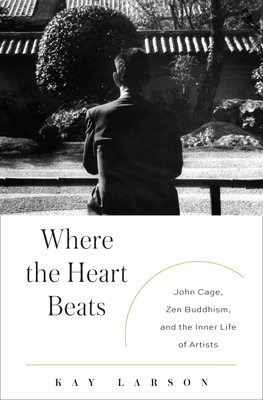 “Good music can act as a guide to good living,”John Cage
“Good music can act as a guide to good living,”John Cage (1912-1992) once said. But what, exactly, is good music, or good living, or, for that matter, goodness itself?
Where the Heart Beats: John Cage, Zen Buddhism, and the Inner Life of Artists (
public library) is a remarkable new intellectual, creative, and spiritual biography of Cage — one of the most influential composers in modern history, whose impact reaches beyond the realm of music and into art, literature, cinema, and just about every other aesthetic and conceptual expression of curiosity about the world, yet also one of history’s most misunderstood artists — by longtime art critic and practicing Buddhist
Kay Larson. Fifteen years in the making, it is without a doubt the richest, most stimulating,
most absorbing book I’ve read in the past year, if not decade — remarkably researched, exquisitely written, weaving together a great many threads of cultural history into a holistic understanding of both Cage as an artist and Zen as a lens on existence.
From his early life in California, defined by his investigations into the joy of sound, to his pivotal introduction to Zen Buddhism in Japanese Zen scholar
D. T. Suzuki’s Columbia University class, to his blossoming into a force of the mid-century avant-garde, Larson traces Cage’s own journey as an artist and a soul, as well as his intermeshing with the journeys of other celebrated artists, including
Marcel Duchamp,
Jasper Johns,
Yoko Ono,
Robert Rauschenberg,
Jackson Pollock, and, most importantly,
Merce Cunningham.
The book itself has a beautiful compositional structure, conceived as a conversation with Cage and modeled after Cage’s imagined conversations with Erik Satie, one of his mentors, long after Satie’s death. Interspersed in Larson’s immersive narrative are italicized excerpts of Cage’s own writing, in his own voice.
Where to begin? Perhaps at the core — the core of what Cage has come to be known for, that expansive negative space, isn’t nihilistic, isn’t an absence, but, rather, it’s life-affirming, a presence. Cage himself reflects:
Our intention is to affirm this life, not to bring order out of chaos, nor to suggest improvements in creation, but simply to wake up to the very life we’re living, which is so excellent once one gets one’s mind and desires out of its way and lets it act of its own accord.
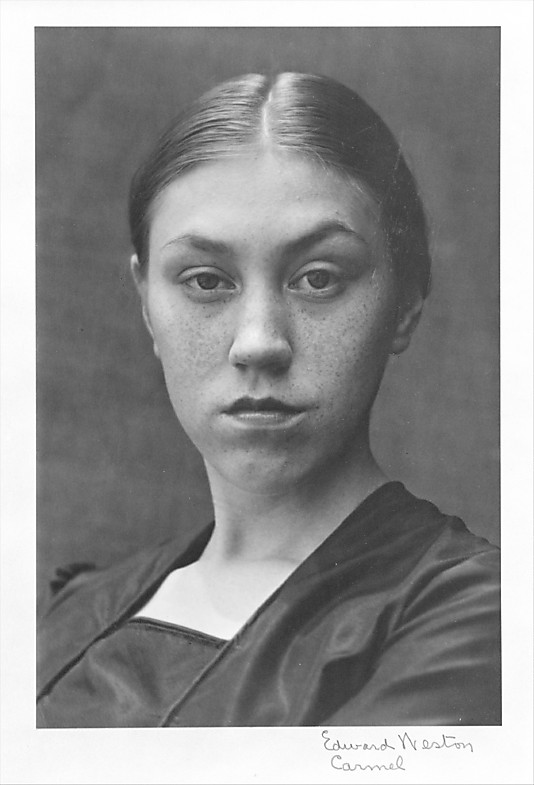
Xenia Kashevaroff
Image courtesy of the Metropolitan Museum of Art
In his early life, however, Cage was rather unable to get his “mind and desires out of the way,” leading himself into a spiral of inner turmoil. While engaged in a relationship with a man named Don Sample, he met artist Xenia Kashevaroff, the Alaskan-born daughter of a Russian priest, and quickly fell in love. The two got married and, for a while, Cage was able to appease his dissonance about his affair with Sample. But rather than gaining deeper self-knowledge, he seemed to steer further away from himself. Perhaps that’s what prompted him, sixty years later, to admonish:
I’m entirely opposed to emotions….I really am. I think of love as an opportunity to become blind and blind in a bad way….I think that seeing and hearing are extremely important; in my view they are what life is; love makes us blind to seeing and hearing.
By the 1940s, Cage’s relationship with Xenia had begun to unravel. When the two eventually divorced in 1945, Cage’s identity was thrown into turbulence. His work followed faithfully, as he set out to compose Ophelia (1946), a “two-tone poem to madness” based on Shakespeare. Larson writes:
Margaret Leng Tan asked Cage why his portrait of Ophelia is so much harsher than Shakespeare’s. She recorded his reply that ‘all madness is inherently violent, even when it is not directed towards others, for it invariably ravages the sufferer internally.’
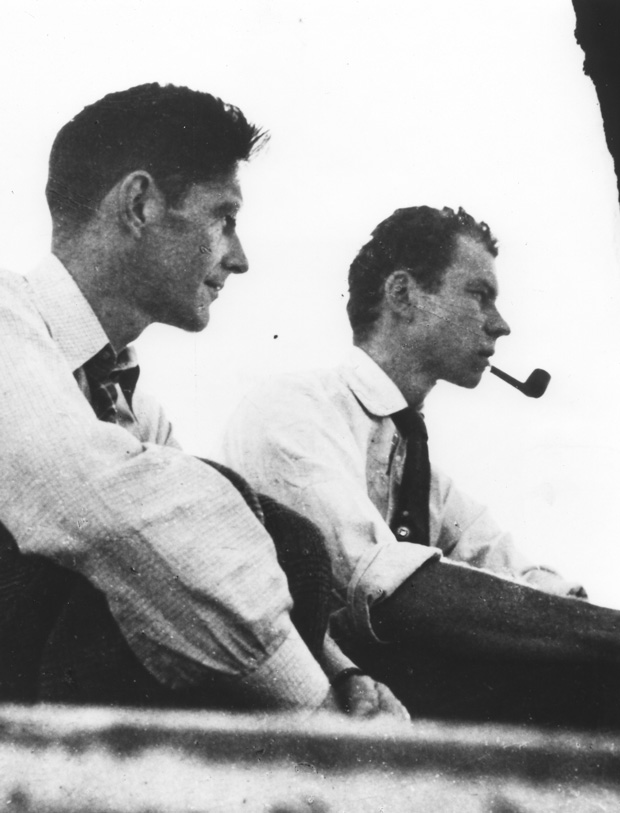
Cage and Cunningham, circa 1948, as Cage's confusion and despair began to lift. In this classic image, taken at Black Mountain College, the perfection of their partnering seems a force of nature. Why did Cage struggle at first?
Image courtesy of John Cage Trust / Penguin
Soon, Cage began the decades-long romance with the love of his life, dancer and choreographer
Merce Cunningham, which would last until the end of Cage’s life and bequeath some of the most magical collaborations in the history of 20th-century art. Around the same time, Cage began the other essential relationship of his life — that with Zen Buddhism.
Hardly anywhere does Larson’s gift for prose and grasp of the human condition shine more beautifully than in this passage articulating the profound, uncomfortable transformation that love sets in motion:
Caught in the roar of his emotions, Cage was forced to confront a question totally new to him: What is the ‘self’ that is being expressed? The self that hurts so badly it nearly kills you? The self that isn’t seen until it aches?
When Cage and Cunningham met, perhaps they felt a tremor of gravitational shift. It might have been small at first, or the shiver might have been so insistent it rattled them. Whatever the case, something evidently stirred between the two men before they came to New York. But maybe nothing was spoken.
So it is with the places preparing to teach us. It’s only when the heart begins to beat wildly and without pattern — when it begins to realize its boundlessness — that its newly adamant pulse bangs on the walls of its cage and is bruised by its enclosure.
To feel the heart pound is only the beginning. Next is to feel the hurt — the tearing of the psyche — the prelude of entry into the place one has always feared. One fears that place because of being drawn to it, loving it, and wanting to be taught by it. Without the need to be taught, who would feel the psyche rip?…. Without the bruise, who would know where the walls are?
Tying it back to Cage himself, Larson writes:
Bruised and bloodied by throwing himself against the four walls of his enclosure, and deeply shaken by his shrieking emotions, Cage stopped pacing his confinement and realized that his container had no roof. Looking up, he could see the sky. Fascinated, he set out to explore this new dimension.
What he found was a language of silence and immanence.
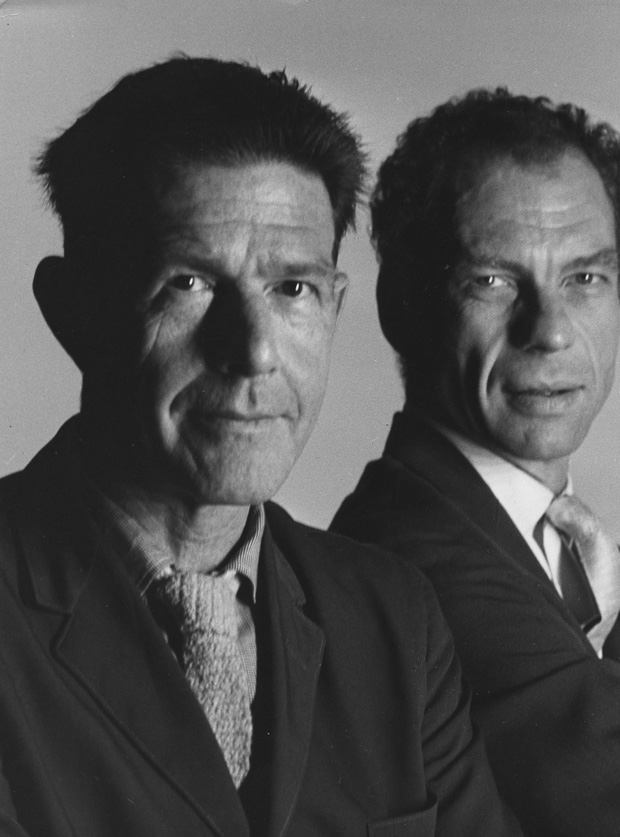
In 1964, John Cage was fifty-two years old and had been partnering with Merce Cunningham for two decades. The two men's bright confidence in 1948 has shifted to something calmer: the settled assurance of the bond between them -- one of the great redeeming love affairs in the history of the American arts -- which would endure until their deaths.
Image courtesy of John Cage Trust / Penguin
What can be analyzed in my work, or criticized, are the questions.
Further:
My composition arises out of asking questions. I am reminded of a story early on about a class with Schoenberg. He had us go to the blackboard to solve a particular problem in counterpoint (though it was a class in harmony). He said, ‘When you have a solution, turn around and let me see it.’ I did that. He then said: ‘Now another solution, please.’ I gave another and another until finally, having made seven or eight, I reflected a moment and then said with some certainty: ‘There aren’t any more solutions.’ He said: ‘OK. What is the principle underlying all of these solutions?’ I couldn’t answer his question; but I had always worshipped the man, and at that point I did even more. He ascended, so to speak. I spent the rest of my life, until recently, hearing him ask that question over and over. And then it occurred to me through the direction that my work has taken, which is renunciation of choices and the substitution of asking questions, that the principle underlying all of the solutions that I had given him was the question that he had asked, because they certainly didn’t come from any other point. He would have accepted the answer, I think. The answers have the questions in common. Therefore the question underlies the answers.
This profound pursuit of questions, coupled with disinterest in criticism, came to define Cage’s aesthetic. Larson writes:
One of the relentless consequences of the choices modernists made was uproar: the convulsions of fear and loathing that arose whenever a new aesthetic proposition appeared on the horizon. Cage’s own life — hardly immune from controversy even now — offers an object lesson. He learned very early to ignore criticism, since he knew perfectly well his work was not ridiculous. Criticism was of no interest. Nor was praise, which seemed to require that he repeat himself. ‘At every point society acts to keep you from doing what you have to do,’ he said in 1973. From the outset, he set off to find his own answers, and he looked to experimentalists for precedents.
One remarkable aspect of Cage’s music, derived from his close study of Indian traditions, was the notion of “disinterestedness” — which is not to be confused with “indifference.” Larson distinguishes:
From the standpoint of spiritual practice, the two words have nothing in common. Indifference borders on nihilism. It has a quality of ‘not caring.’ It is ‘apathetic.’ It expresses corrosive cynicism. Ultimately, it is poisonous, both to the practitioner and to the culture as a whole.
Disinterestedness, on the contrary, ‘is unbiased by personal interest or advantage; not influenced by selfish motives,’ according to the Random House Dictionary (1971). Disinterestedness is the natural outcome of meditation on the self and recognition of its lack of substance — then what can trouble you? freeing one’s mind from the grip of the self leads to spiritual ease — being at home in your own skin, free of self-attachment, cured of likes and dislikes, afloat in rasa. It’s how you open your ears to the music of the world.
Cage defined disinterestedness and equated it with ‘love’ in 1948:
‘If one makes music, as the Orient would say, disinterestedly, that is, without concern for money or fame but simply for the love of making it, it is an integrating activity and one will find moments in his life that an complete and fulfilled.’
Look at everything. Don’t close your eyes to the world around you. Look and become curious and interested in what there is to see.
For Cage, this was tied to bridging
the dangerous divide between the conscious and unconscious mind:
There are two principal parts of each personality: the conscious mind and the unconscious, and these are split and dispersed, in most of us, in countless ways and directions. The function of music, like that of any other healthy occupation, is to help to bring those separate parts back together again. Music does this by providing a moment when, awareness of time and space being lost, the multiplicity of elements which make up an individual become integrated and he is one.

In Japan for the first time, on a trip organized by Toshi Ichiyanagi and Yoko Ono in 1962, Cage immediately set off to D. T. Suzuki's house. Ten years after the debut of 4'33'', Cage honored his ninety-two-year-old teacher and the teachings that had shown him the heart of silence.
Image courtesy of John Cage Trust / Penguin
By the 1950s, however, Cage had started to drift away from the Indian spiritual traditions as he became more deeply immersed in the work of D. T. Suzuki and, in particular, his
Essays in Zen Buddhism. Larson writes:
Cage’s mind is breaking its shell. It’s not that he has walked away from the Indians altogether, Cage rarely abandoned anyone or anything that affected him deeply. Rather, a new thought (or a series of thoughts) is in the process of emerging. Cage has set out to solve the problems caused by love — his love for Merce, his love for music, and a love that perhaps he can’t name, that arises as a mysterious upheaval of the heart, a spiritual fire that is causing an urgent search for solutions.
Suzuki, in fact, taught Cage something essential about breaking the bounds of Western culture’s most destructive paradigm — its
toxic ultra-individualismand attachment to ego:
Suffering builds character and impels you to penetrate life’s secrets. It’s the path of great artists, great religious leaders, great social reformers. The problem is not suffering per se, but rather our identification with our own ego: our divided, dualistic, cramped view of things. ‘We are too ego-centered,’ Suzuki tells Cage.’ The ego-shell in which we live is the hardest thing to outgrow. We seem to carry it all the time from childhood up to the time we finally pass away.’
This notion of renouncing the ego was comfortably aligned with Cage’s own dismissal of the emotions, so he embraced it:
[Q:] Since your ego and your likes and dislikes have been taken out of your compositions, do you still view them as your compositions, in the sense that you created them?
[Cage:] Emotions, like all tastes and memory, are too closely linked to the self, to the ego. The emotions show that we are touched within ourselves, and tastes evidence our way of being touched on the outside. We have made the ego into a wall and the wall doesn’t even have a door through which the interior and exterior could communicate! Suzuki taught me to destroy that wall. What is important is to insert the individual into the current, the flux of everything that happens. And to do that, the wall has to be demolished; tastes, memory, and emotions have to be weakened; all the ramparts have to be razed. You can feel an emotion; just don’t think that it’s so important….Take it in a way that you can then let it drop! Don’t belabor it! It’s just like the chicken I ordered in the restaurant: it concerns me, but it’s not important….And if we keep emotions and reinforce them, they can produce a critical situation in the world. Precisely that situation in which all of society is now entrapped!
To liberate himself from the burdens of ego, Cage turned to his now-legendary chance operations — specifically, using the ancient Chinese
I Ching (Book of Changes) as a key decision-making tool in his compositions. It helped him, as Larson puts, “ask questions of the most fundamental sort.”
Instead of representing my control, they represent questions I’ve asked and the answers that have been given by means of chance operations. I’ve merely changed my responsibility from making choices to asking questions. It’s not easy to ask questions.
Further:
I became free by means of the I Ching from the notion of 2 (relationship). Or you could say I saw that all things arerelated. We don’t have to bring about relationships.
Larson:
Chance operations offered Cage a chance to change his own mind without intellectualizing but, rather, by immersing himself in experiences without judgment and letting them teach him. Indeed, chance and change went hand-in-hand for him:
People frequently ask me if I’m faithful to the answers, or if I change them because I want to. I don’t change them because I want to. When I find myself at that point, in the position of someone who would change something — at that point I don’t change it, I change myself. It’s for that reason that I have said that instead of self-expression, I’m involved in self-alteration.
Cage brought this ethos to his music. Towards the end of 1950, he composed the third movement of
Concerto for Prepared Piano and Orchestra by asking questions, tossing coins, and turing to the
I Ching for answers. He built a chart of 32 moves that would generate sounds (or silences) as the
I Ching told him which number to pick. The remaining 32 of the book’s 64
hexagrams were to produce pauses of various durations. Larson sums up the teaching embedded in Cage’s experience with the
I Ching:
It was a moral and spiritual teaching: Use your head. Set up your structure as carefully as you can, then surrender to the experience. Accept all of it willingly and gratefully. Be present for whatever comes. Open the heart to chance and change.
Cage himself put it thusly:
I do accept, I have always accepted everything the I Ching has revealed to me….
I never thought of not accepting it! That is precisely the first thing the I Ching teaches us: acceptance. It essentially advances this lesson: if we want to use chance operations, then we must accept the results. We have no right to use it if we are determined to criticize the results and to seek a better answer. In fact, the I Ching promises a completely sad lot to anyone who insists on getting a good answer. If I am unhappy after a chance operation, if the result does not satisfy me, by accepting it I at least have the chance to modify myself, to change myself. But if I insist on changing the I Ching, then it changes rather than I, and I have gained nothing, accomplished nothing!
This relinquishing of the self in the hands of pure awareness is something Cage also found in another of his great spiritual heroes, Henry David Thoreau:
Thoreau got up each morning and walked to the woods as though he had never been where he was going to, so that whatever was there came to him like liquid into an empty glass. Many people taking such a walk would have their heads so full of other ideas that it would be a long time before they were capable of hearing or seeing. Most people are blinded by themselves.
But, for Cage, it wasn’t enough to remove that self-blinding from his spiritual life — he had to remove it from his creative life as well, from his music:
The value judgment when it is made doesn’t exist outside the mind but exists within the mind that makes it. When it says this is good and that is not good, it’s a decision to eliminate from experience certain things. Suzuki said Zen wants us to diminish that kind of activity of the ego and to increase the activity that accepts the rest of creation. And rather than taking the path that is prescribed in the formal practice of Zen Buddhism itself, namely, sitting cross-legged and breathing and such things, I decided that my proper discipline was the one to which I was already committed, namely, the making of music. And that I would do it with a means that was as strict as sitting cross-legged, namely, the use of chance operations, and the shifting of my responsibility from the making of choices to that of asking questions.
I think the history of art is simply a history of getting rid of the ugly by entering into it, and using it. After all, the notion of something outside of us being ugly is not outside of us but inside of us. And that’s why I keep reiterating that we’re working with our minds. What we’re trying to do is to get them open so that we don’t see things as being ugly, or beautiful, but as we see them just as they are.
But the practice of pure presence was very much a discipline for Cage:
True discipline is not learned in order to give it up, but rather in order to give oneself up. Now, most people never even learn what discipline is…. It means give up the things closest to you. It means give yourself up, everything, and do what it is you are going to do. At that point, what have you given up? Your likes, your dislikes, etc.
The notion of discipline stands at the odd intersection of structure and nothingness, which permeated much of Cage’s thinking. In November 1951, he gave his famous “Lecture on Nothing,” a follow-up to his “Lecture on Something,” which articulates the osmosis between
“something” and “nothing”:
We really do need structure, so we can see we are nowhere.
The lecture concludes:
Everybody has a song which is no song at all: it is a process of singing, and when you sing, you are where you are. All I know about method is that when I am not working I sometimes think I know something, but when I am working, it is quite clear that I know nothing.
Perhaps it was this fascination with method and nothingness that led Cage to his obsession with silence, most famously manifest in his 1952 composition
4’33”, and led him to remark:
Silence is not acoustic. It is a change of mind, a turning around.
Implicit to this is, once again, the notion of total surrender to what is. Cage:
There is no rest of life. Life is one. Without beginning, without middle, without ending. The concept: beginning middle and meaning comes from a sense of self which separates itself from what it considers to be the rest of life. But this attitude is untenable unless one insists on stopping life and bringing it to an end. That thought is in itself an attempt to stop life, for life goes on, indifferent to the deaths that are part of its no beginning, no middle, no meaning. How much better to simply get behind and push!
At the same time, Cage observed the dynamic rather than static quality of life itself — the fundamental role of change, once again:
You say: the real, the world as it is. But it is not, it becomes! It moves, it changes! It doesn’t wait for us to change…. It is more mobile than you can imagine. You are getting closer to this reality when you say it ‘presents itself'; that means that it is not there, existing as an object.
The world, the real is not an object. It is a process.
Embedded in this process-ness of life is Cage’s heartening relationship with
boredom:
In Zen they say: If something is boring after two minutes, try it for four. If still boring, try it for eight, sixteen, thirty-two, and so on. Eventually one discovers that it’s not boring at all but very interesting.
In the end, however, Cage’s life — and death — presents us with the grandest challenge to fully embodying his philosophy. In discussing a 2010 exhibition honoring Cage, and the language of its brochure, Larson laments:
The only difficulty with ‘ephemeral and transitory poetics’ is their transitoriness. Exhibitions of Cage’s work seem to be lacking a central core, a cohesion. That unifying voice, of course, was supplied by Cage himself, and he has passed on. We celebrate change and yet we also feel its sting. Zen teachers say, though, just look around you. Where has he gone? He’s still speaking to us.
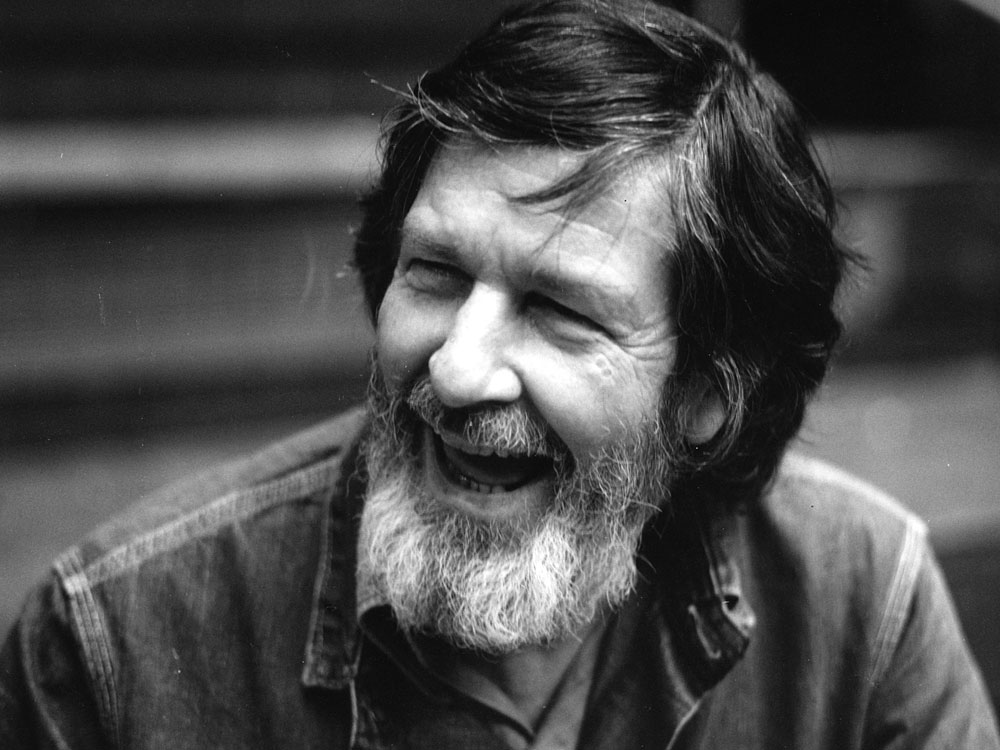
Cage has become 'the man of the great smile, the outgoing laugh,' his friend Peter Yates remembered. 'Around him everyone laughs.'
Larson concludes with a beautiful metaphor for both Zen Buddhism and Cage’s legacy, reflecting on artist Bruce Nauman’s show Mapping the Studio I (Fat Chance John Cage), which was spurred by Nauman’s discovery that he had mice in his studio:
In the studio, things happen by chance. A mouse runs by. A moth flitters through space. These ‘chance events’ are random and filled with non-intention — the buzz of small creatures, caught on film, in the midst of their busy eventful lives. As far as a mouse is concerned, its life is the center of the universe. By watching through the neutral eye of the camera, we are able to see what we might not glimpse otherwise: that a ‘silent’ space is an invisible game of billiards played by beings, each at its own center, each responding to all other beings. The mice, dashing here and there, are playing out their expectations about the cat. Life fills the gaps.
There are absolutely no metaphors, just observations.
[ ... ]
The artist maps reality. That’s the cat-and-mouse game between the artist and the world. And it’s not just the artist who plays it. Each of us is in a cat-and-mouse game with our perceptual life. Do we really see ourselves? Or do we see only what obtrudes in daylight? Do we crash through our nightlife, scattering the subtle things that abide there? Or do we simply watch without judgment, in the expectation of learning something?
Source: http://www.brainpickings.org/2012/07/05/where-the-heart-beats-john-cage-kay-larson/


















.jpg)
.jpg)

























